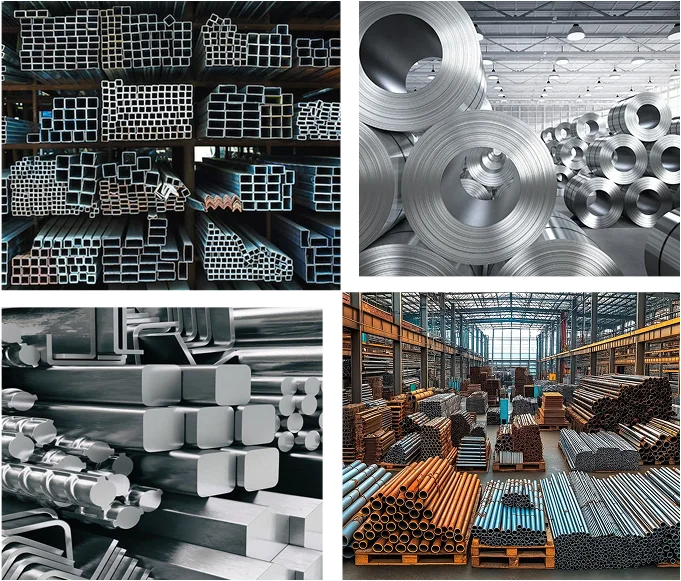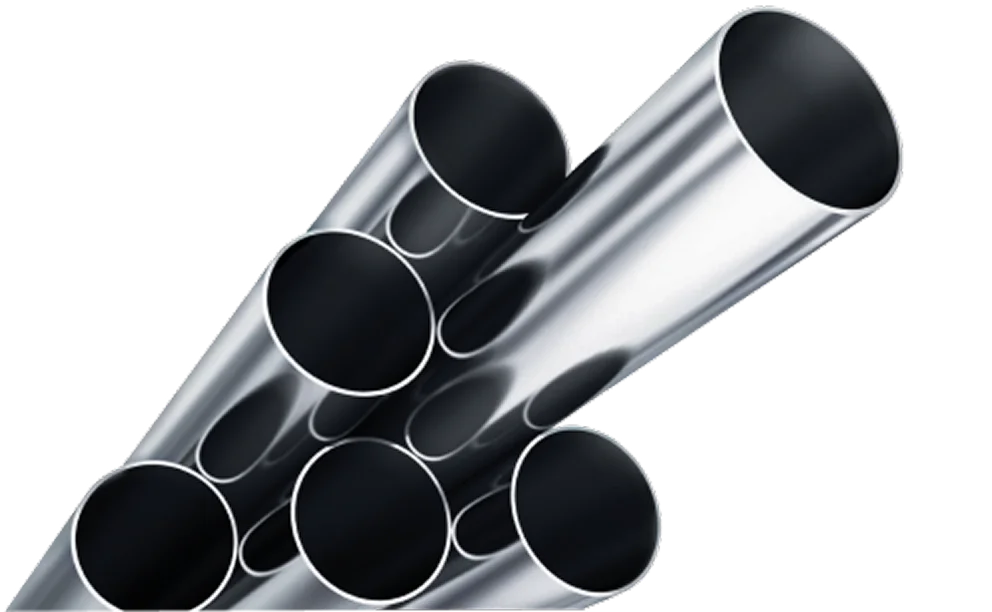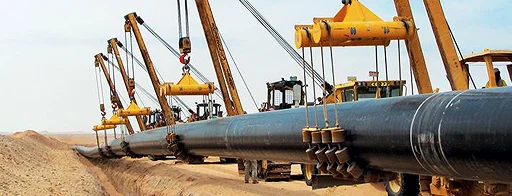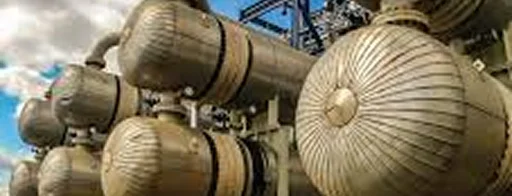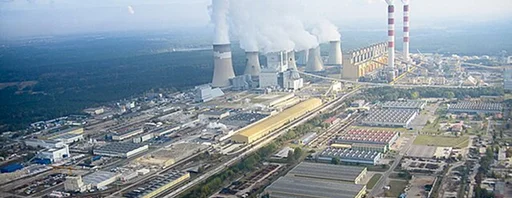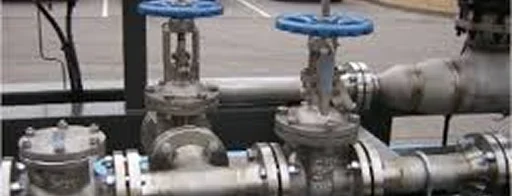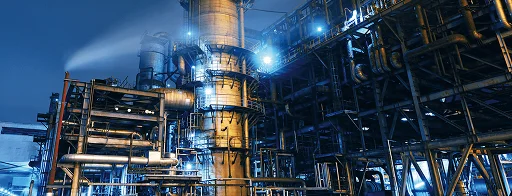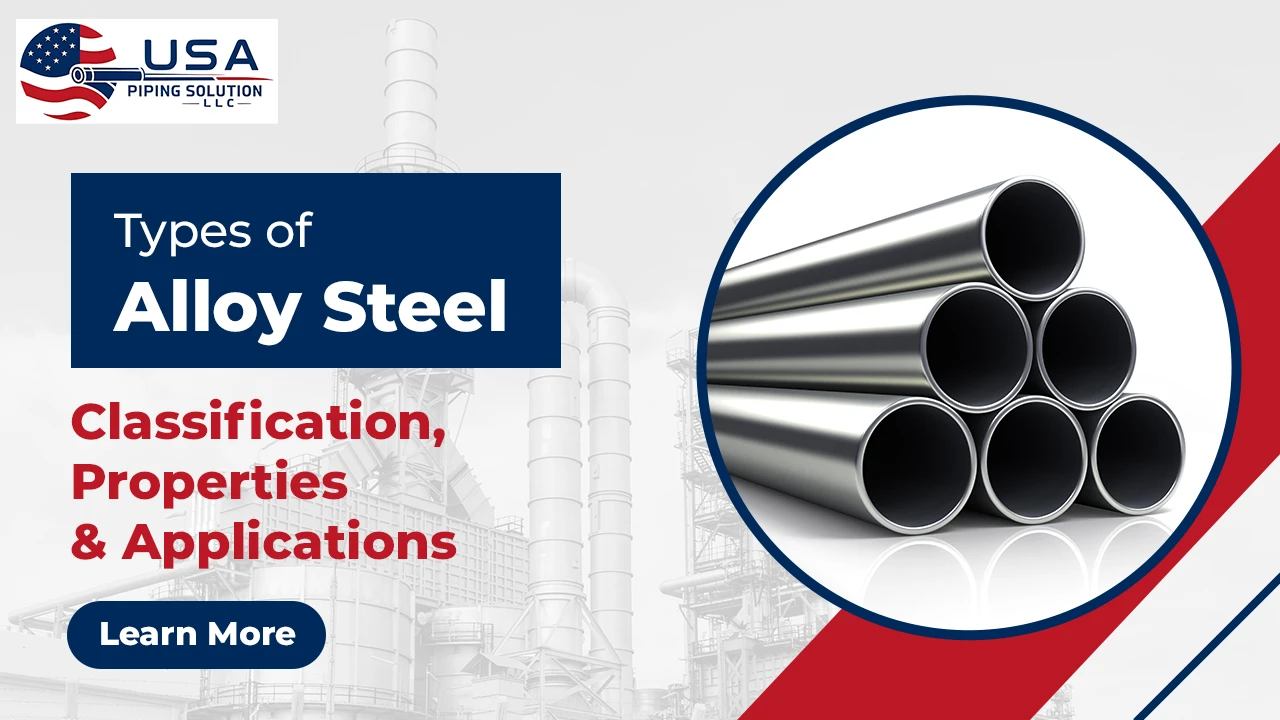
Alloy steel is a distinct type of steel made by blending iron and carbon with other alloying elements such as manganese, chromium, nickel and molybdenum.These additional elements enhance its mechanical strength, corrosion resistance and durability, making it an essential material in heavy industries such as automotive, construction and aerospace.
Recognized for its toughness and high-temperature resistance, alloy steel offers enhanced mechanical performance and extended service life. Alloy steel is classified into low alloy steel and high alloy steel categories based on the type and quantity of alloying elements used, with each type designed for specific industrial applications.
In this comprehensive blog, we’ll break down the types of alloy steel, their composition, classifications, key properties, manufacturing variations, and practical uses in industrial environments. This blog is also useful for engineering exams like SSC JE ME, GATE ME and RRB JE Mechanical Engineering.
What Is Alloy Steel?
Alloy steel is steel that has been combined with one or more alloying elements in varying proportions commonly including chromium, nickel, molybdenum, vanadium, silicon and manganese. These elements improve specific properties like toughness, hardness, corrosion resistance, and heat tolerance.
Depending on the alloying content, it’s classified into:
- Low alloy steel: Contains up to 5% alloying elements. Contains more than 5%, often exceeding 10%.
In industries like oil & gas and power generation, low alloy steels are commonly used due to their strength, weldability and cost-effectiveness.
Different Types of Alloy Steel
Low Alloy Steel
Low alloy steel is characterized by having less than 5% total alloying elements. Common additions such as chromium, molybdenum, nickel and vanadium enhance its mechanical strength, ductility and resistance to corrosion and wear. A popular example is 4130 steel, which typically consists of 0.30% carbon and small quantities of chromium and molybdenum.
High Alloy Steel
High alloy steel is defined by a higher concentration of alloying elements usually above 10%. Stainless steel is the most common type, containing at least 12% chromium for corrosion resistance. High alloy steels are widely used in sectors requiring superior mechanical properties and environmental resistance, such as:
- Aerospace and defense
- Chemical processing
- Medical device manufacturing
Sub-types include martensitic, austenitic and ferritic stainless steels, as well as tool steel and maraging steel.
Comparison Table: Low Alloy vs High Alloy Steel
|
Feature |
Low Alloy Steel |
High Alloy Steel |
|---|---|---|
|
Alloy Content |
1% - 5% |
> 5% |
|
Cost |
More affordable |
More expensive |
|
Corrosion Resistance |
Moderate |
Excellent |
|
Strength |
High |
Very High |
|
Applications |
Structural, boilers |
Chemical, food, pharma systems |
|
Weldability |
Good |
Varies by grade |
Classification of Alloy Steels Based on Application
In Construction and Large Structures
Alloy steels provide the structural backbone for modern engineering marvels airports, bridges, skyscrapers and stadiums. Due to their superior strength-to-weight ratio, they are also used as reinforcement bars within concrete frameworks. Small fasteners like screws, nails and bolts are also frequently manufactured using alloy steel. Knowing what is low alloy steel and its cost-performance advantage is critical for industries like oil & gas and energy.
For Bridge Construction
Weathering steels a sub set of alloy steels containing copper, chromium and nickel to resist atmospheric corrosion. These are popular in bridge design due to their:
- Natural patina eliminating the need for paint
- Reduced maintenance cost
- Long-term durability
- Aesthetic appeal
They are also used in architectural cladding for buildings.
Flat Products: Alloy Steel Plates and Strips
Alloy steel is available as plates and strips in various grades and thicknesses. These flat products are used in welded structures, shipbuilding and equipment fabrication.
Strips & Coils
Alloy steel coils are manufactured through hot or cold rolling and are often galvanized. These materials serve multiple construction functions such as:
- Wall and roof panels
- Steel framing systems
- Purlins and cladding
Long Products
Girders, T-sections, bars, and rods made from alloy steel are critical for load-bearing in infrastructure and manufacturing plants.
Alloy Steel Flanges
Flanges made from alloy steel are essential for high-pressure pipeline systems. Variants include:
- Weld Neck Flanges: Ideal for high-stress applications.
- Lap Joint Flanges: Suitable for pipelines requiring frequent maintenance or inspection.
Alloy Steel Pipe Products
These pipes are made from combinations of nickel, chromium and molybdenum for enhanced performance in extreme conditions. Available types include:
- Seamless pipes
- Welded pipes
- Electric fusion welded pipes
- Large-diameter variants
Their corrosion resistance and structural reliability make them ideal for high-pressure, high-temperature and corrosive environments.
Properties of Alloy Steel
|
Element |
Symbol |
wt. % |
Function |
|---|---|---|---|
|
Aluminium |
Al |
0.95–1.30 |
Used in nitriding steels for surface hardness |
|
Bismuth |
Bi |
– |
Enhances machinability |
|
Boron |
B |
0.001–0.003 |
Improves hardenability |
|
Chromium |
Cr |
0.5–2.0 |
Increases hardenability |
|
4–18 |
Improves corrosion resistance |
||
|
Copper |
Cu |
0.1–0.4 |
Enhances corrosion resistance |
|
Lead |
Pb |
– |
Boosts machinability |
|
Manganese |
Mn |
0.25–0.40 |
Prevents sulfur-induced brittleness |
|
>1 |
Enhances hardenability |
||
|
Molybdenum |
Mo |
0.2–0.5 |
Prevents grain growth |
|
Nickel |
Ni |
2–5 / 12–20 |
Improves toughness and corrosion resistance |
|
Silicon |
Si |
0.2–0.7 |
Boosts strength and hardenability |
|
2 |
Raises yield strength (spring steel) |
||
|
Sulfur |
S |
0.08–0.15 |
Improves machinability |
|
Titanium |
Ti |
– |
Reduces martensitic hardness in Cr steels |
|
Tungsten |
W |
– |
Improves high-temperature hardness |
|
Vanadium |
V |
0.15 |
Increases strength, refines grain structure, maintains ductility |
How to Choose the Right Alloy Steel Type
Selecting the appropriate alloy steel grade for a specific industrial application involves careful evaluation of multiple performance and project-based criteria. One of the first considerations is strength requirements the selected alloy must meet the necessary tensile and yield strength parameters to ensure structural integrity under load. Equally important is corrosion resistance, especially for environments with high exposure to moisture, chemicals, or saline conditions; in such cases, high alloy steels like stainless variants are ideal due to their superior resistance properties.
Machinability also plays a crucial role in fabrication-heavy applications. If your project demands precision machining, choosing free-machining grades can enhance efficiency and reduce tool wear. Similarly, weldability should be factored in for projects that involve frequent welding, assembly, or structural integration some alloy steels are specifically engineered to maintain strength and flexibility at the welded joints.
Conclusion
Understanding the different types of alloy steel is vital for engineers and buyers working in industries that prioritize safety, longevity, and cost-efficiency. Whether choosing low alloy steel for high-strength structures or high alloy steel for corrosion-sensitive systems, the correct material selection impacts long-term performance and compliance.
Engineers must choose from various types of alloy steel depending on operational environments, pressure ratings, and material compatibility. At USA Piping Solution, we supply a comprehensive range of alloy steel pipes and tubes designed to meet the demanding requirements of pharmaceuticals, food & beverage, hospitals, research institutions and commercial facilities.
FAQs on Types of Alloy Steel
What is low alloy steel?
Low alloy steel includes up to 5% alloying elements such as chromium, nickel, and molybdenum. It offers higher mechanical strength and is commonly used in pressure vessels, piping, and structural steel.
What is high alloy steel?
High alloy steel contains more than 5% alloying content, often used in environments where corrosion resistance is critical such as chemical plants or cleanrooms.
How is alloy steel different from carbon steel?
Alloy steel includes additional elements to improve properties, while carbon steel primarily contains carbon and iron. Alloy steels offer better toughness, corrosion resistance and durability.
Which alloy steel is best for corrosion resistance?
High alloy steels such as stainless steel, Alloy 20, and Alloy 28 are ideal for environments requiring strong resistance to corrosion, especially in pharma and chemical processing sectors.
